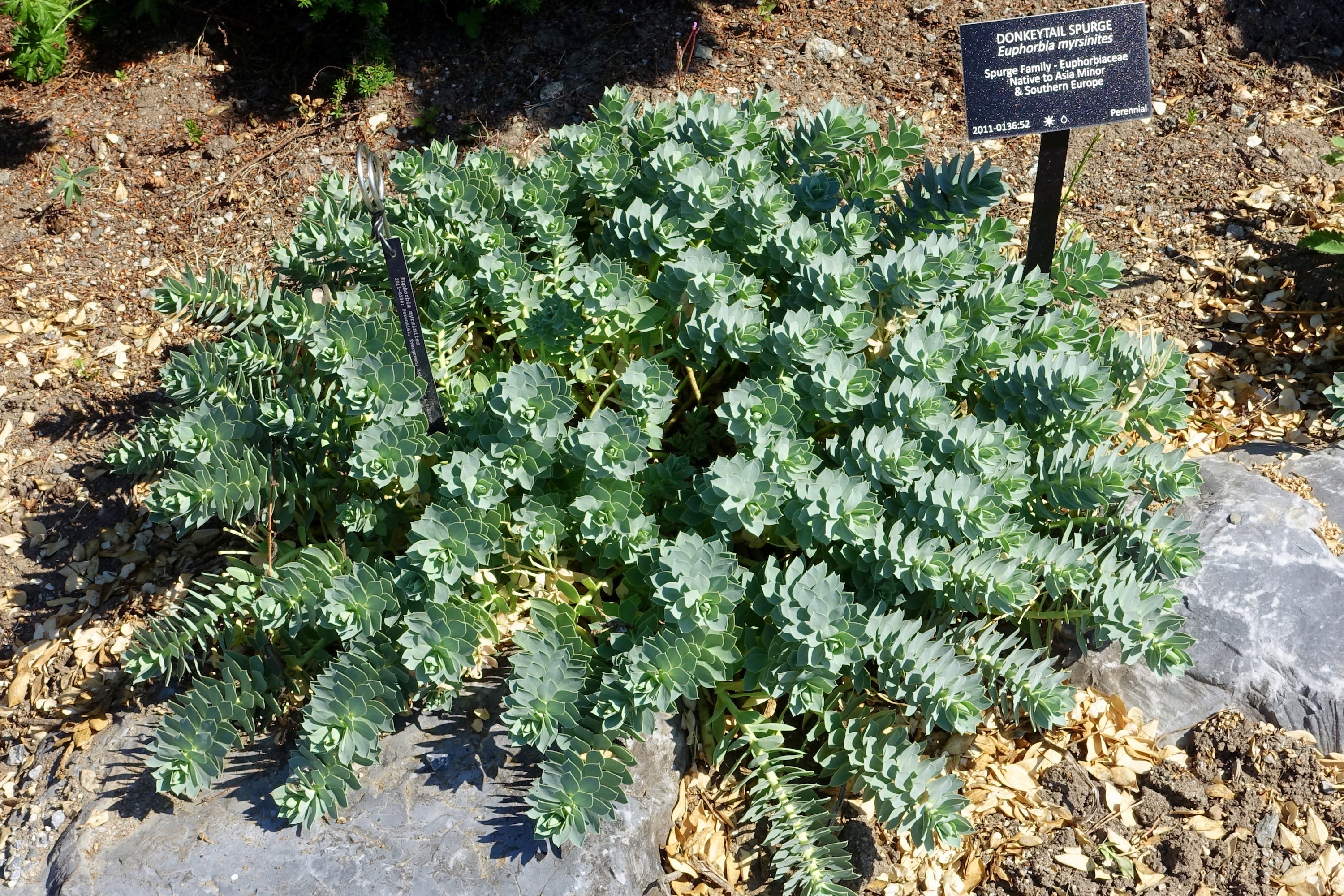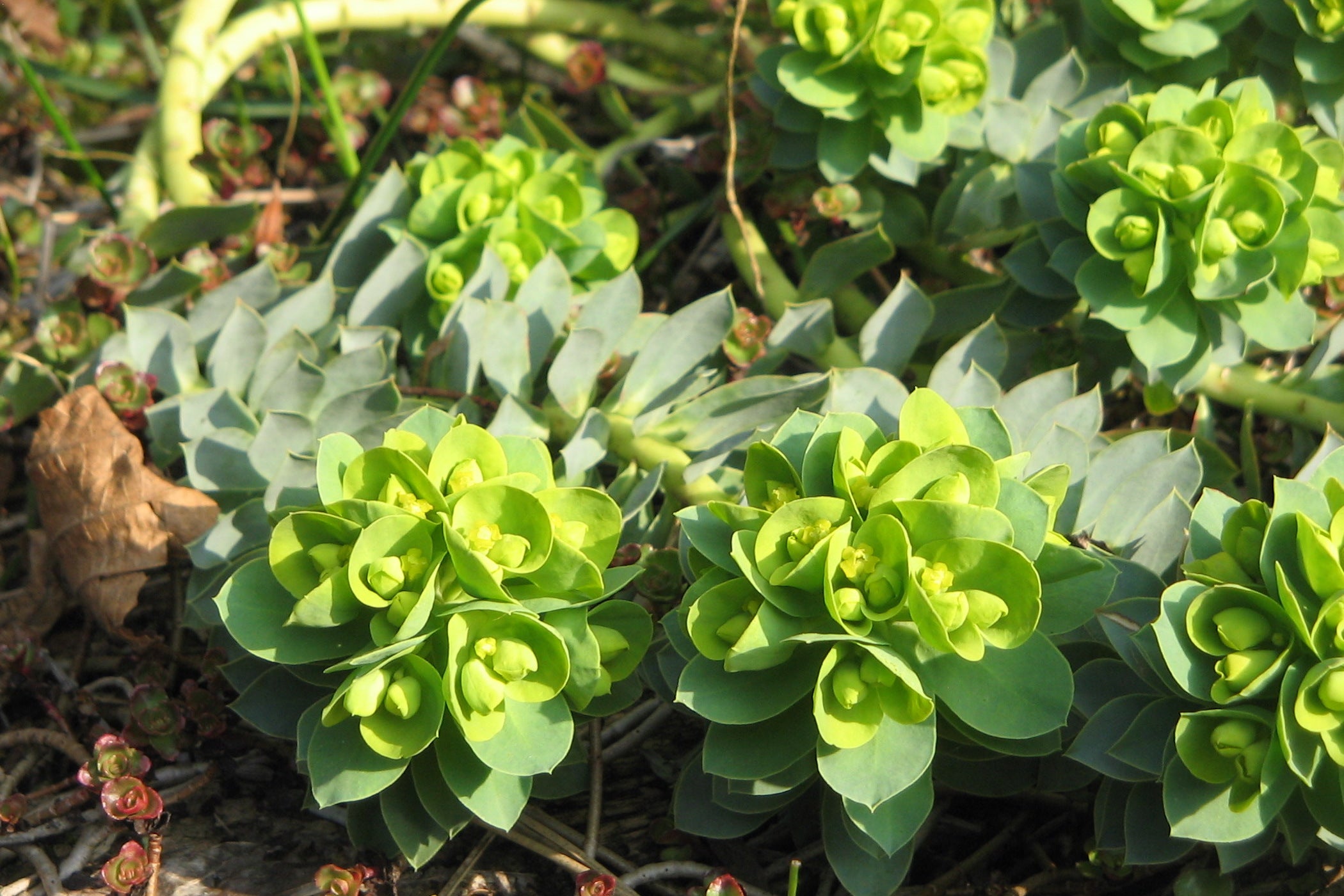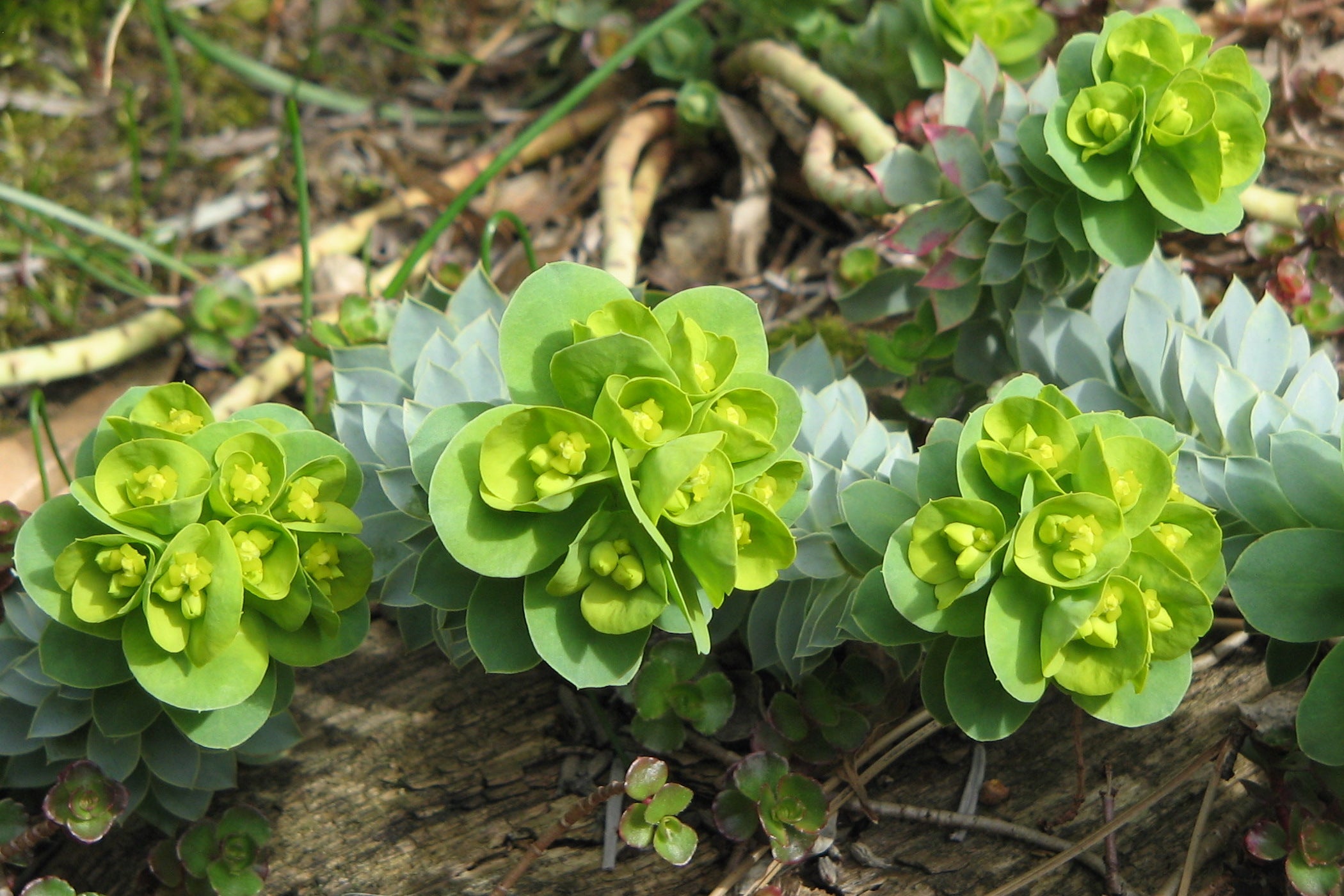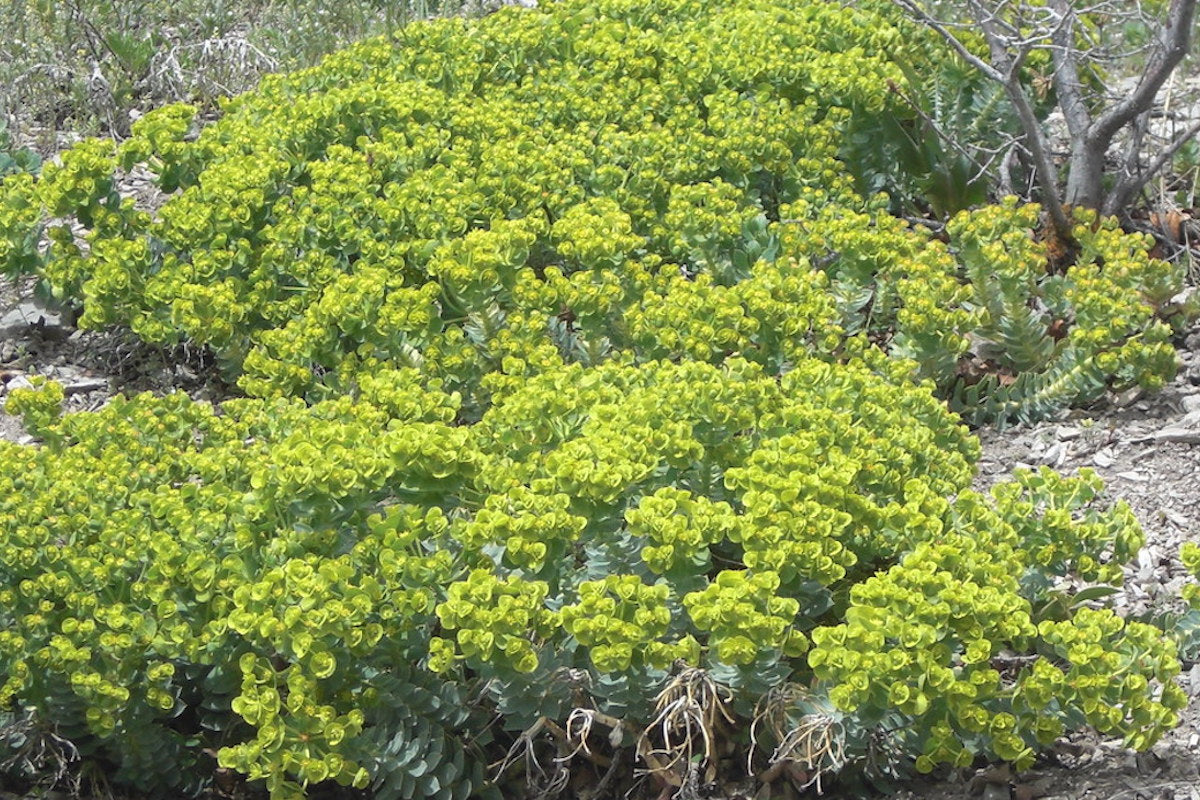Euphorbia myrsinites
Approx. 0.5 litre pot
About this cultivar:
Euphorbia myrsinites is an evergreen perennial which typically grows on ascending to trailing stems rising at the tips. The blue-green, fleshy, succulent-like leaves are arranged in close spirals around the stems and remind me or coral.... not that I see coral very often. Some spring flowers too!
The specific epithet myrsinites is derived from the Greek word myrsinites, which was used in Dioscorides's De Materia Medica to describe its similarity to myrsine, aka myrtle.
Often associated with dry soils and rock gardens, it will still grow almost anywhere else. Quite a sprawly plant it divides opinon. In some US states it is regarded as a pest, yet in the UK it has the Royal Horticultural Society Award of Garden Merit. In reality it is more sprawly and less clumpy than the photos imply, so it a good idea to grow it near edges or through something else.
- Position: Full sun, partial shade
- Soil: Almost any soil, dry soil
- Flowers: March, April, May
- Other features: Royal Horticultural Society Award of Garden Merit (RHS AGM), Great Ground Cover, Drought Tolerant
- Hardiness: H5 - Hardy in most places throughout the UK even in severe winters (-15 to -10°C)
- Habit: Mat forming, trailing
- Foliage: Evergreen
- Height: 15 - 30 cm (0.5 - 1 ft)
- Spread: 15 - 45 cm (0.5 - 1.5 ft)
- Time to full growth: 2 to 5 years
- Plant type: Herbaceous Perennial, shrub, Alpine or Rockery
- Colour: Green, yellow, blue, grey
- Goes well with: Iris, Tulipa, Allium, Lupin and with foliage plants such as Cotinus.
About this genus:
Euphorbia (spurge) is a large and diverse genus of over 2000 (!!) species of flowering plants in the spurge family (Euphorbiaceae). The common name "spurge" derives from the Middle English/Old French espurge ("to purge"), due to the use of the plant's sap as a purgative. The botanical name Euphorbia (pronounced "u-for-be-a") derives from Euphorbos, the Greek physician of king Juba II of Numidia (52–50 BC – 23 AD), who married the daughter of Anthony and Cleopatra (imagine those in-laws!). A philosopher-king, Juba was a prolific writer on various subjects, including natural history. In 12 B.C. Juba named this plant after his doctor Euphorbos. In 1753, Botanist and taxonomist Carl Linnaeus assigned the name Euphorbia to the entire genus in the physician's honor! Phew!
Depending on the cultivar, Euphorbia grow almost anywhere that is not too extreme; we have them everywhere in our garden at Ballyrobert. In the garden Euphorbia is prized for its unique flower heads, textural foliage, and wonderful garden structure. Many new perennial Euphorbia cultivars feature leaves that vary from green to yellow to blue-green to powder blue to purple and some are even variegated or splashed with colour. The flowers attract butterflies and all sorts of creepy crawlies; truely a garden essential!
Try them with Iris, Tulipa, Allium, Lupin and with foliage plants such as Cotinus.




















